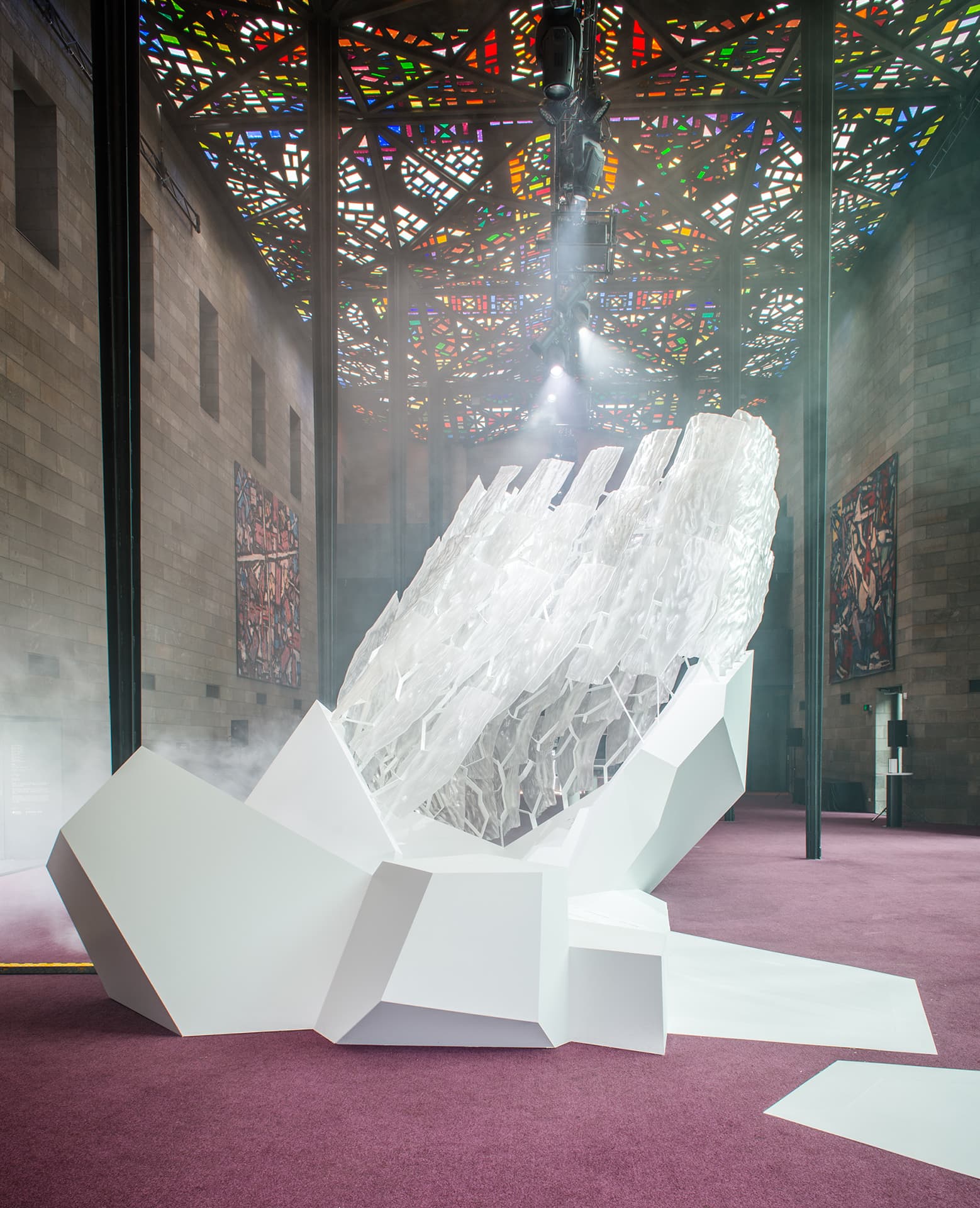FLOE
Free entry
NGV International
Ground Level, Great Hall
19 Jan 18 – 18 Feb 18
Transporting audiences visually and aurally to Antarctica, Floe 2018, draws on the atmospheric effects of the Antarctic landscape to create a speculative architectural installation designed in response to a sound work by Philip Samartzis. The architecture is a part of a larger body of work developed by Roland Snooks, director of the RMIT Architectural Robotics Lab, that explores the architectural implications of algorithmic design through robotic 3D fabrication. The translucent skin of the tower comprises seventy unique overlapping semi-clear polymer panels printed by robot.
The sound work was recorded by Samartzis in Antarctica. By recording and representing the many sounds of Antarctica’s constantly shifting ice shelves, glaciers, icebergs and sea ice, Samartzis challenges the perception of Antarctica as an unchanging landscape, suspended in time and place.
Design Partner: Installation supported by RMIT University.
Sound work supported by the Australian Antarctic Division, the Australia Council for the Arts, the Bogong Centre for Sound Culture, Creative Victoria and RMIT University School of Art.
Image caption:
Roland Snooks architect
Australia born 1978
RMIT School of Architecture & Urban Design research and fabrication
Australia est. 1934
Philip Samartzis sound artist
Australia born 1963
Floe 2018
3D printed polymer, timber, steel
16 channel audio, 12 hrs (looped)
installation view
Picture: Eugene Hyland
